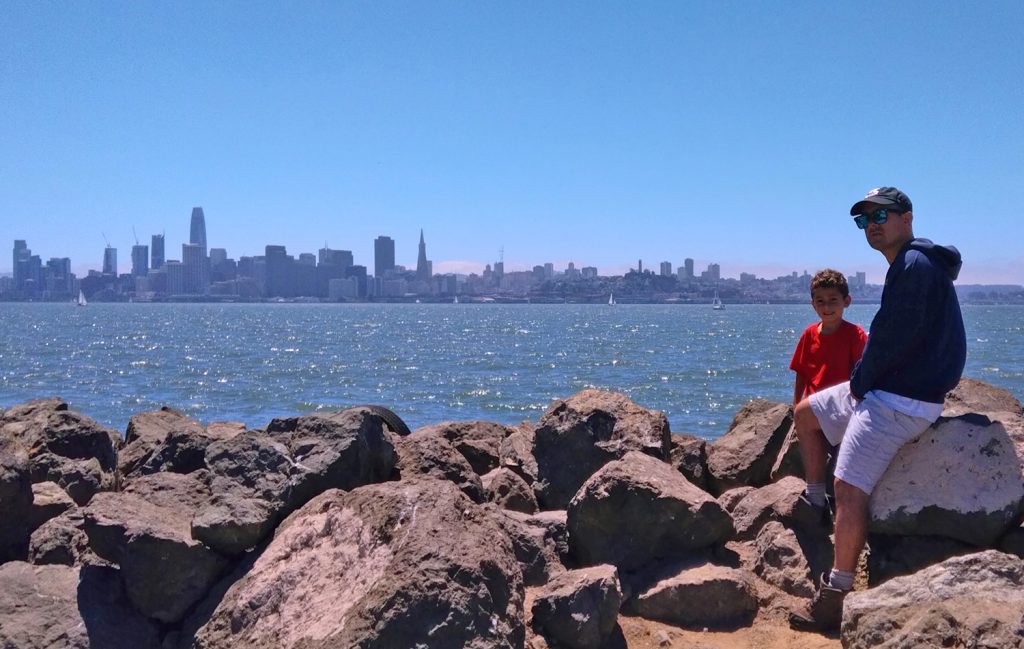 In 1975, the year it launched, the Bay Area Monitor was produced on a mimeograph machine. In case you’re wondering, a mimeograph is basically a high-volume stencil, a way to reproduce printed pages by pushing ink onto paper through letter-shaped holes. These days, you’re more likely to find one in a museum than in an office.
In 1975, the year it launched, the Bay Area Monitor was produced on a mimeograph machine. In case you’re wondering, a mimeograph is basically a high-volume stencil, a way to reproduce printed pages by pushing ink onto paper through letter-shaped holes. These days, you’re more likely to find one in a museum than in an office.
The members of the League of Women Voters of the Bay Area who mimeographed the Monitor into life couldn’t have predicted how the publication would change over the long haul. They probably didn’t expect it to last 45 years. If they did, they would have had trouble imagining the technology used to publish it today — or the world it now covers.
In its infancy, the Monitor focused on specific government plans, and continued to have a narrow planning focus in the ensuing decades. As the Monitor editor for the past 13 years, I’ve opened things up in hopes of reaching a more general audience. In part, this has meant taking advantage of emerging publishing advancements and technologies — namely, more affordable full-color printing and internet-powered digital tools. But more significantly, I’ve sought to bring a broader perspective to the field of regional government.
How? I’ve tried to infuse the Monitor with an inviting narrative style while minimizing jargon, acronyms, and other forms of planner-speak. I’ve looked for opportunities to make human beings (not documents) the characters in our stories. I’ve pushed for analysis of trends, showing how projects contribute to societal shifts, instead of simply touting individual successes. Overall, I’ve attempted to apply the techniques of longform journalism toward the ultimate goal of improving community quality of life.
Why? I believe that this approach supports the League’s mission: to encourage informed and active participation in government. I’ve been optimistic that our coverage could help fuel a dynamic and productive conversation, one that helps many different stakeholders influence policy development.
As it turns out, democracy can be a rather specialized industry, at least in places like public works departments or government board rooms. Getting the general public to engage with — or just pay attention to — government planning is no easy task, no matter how you write about it. The Monitor’s reach hasn’t expanded much outside of its niche — and now it may be nearing the end of its run.
Regardless of changes in focus and format, the publication’s dire future is easily attributable to external circumstances. The financial crisis of 2007 resulted in a significant and permanent decrease in our budget, which comes almost entirely from agencies and individual donations (and not from League membership dues, to clear up that misconception). After operating in this weakened state for more than a decade, we are in no shape to weather the massive financial turmoil wrought by the coronavirus pandemic, and so the Monitor now faces the sobering reality that we are unlikely to make it to the election this November.
That is, at least not in our current print form. As League leaders conduct fundraising outreach in the months ahead to determine if the Monitor can still be published as a magazine in the coming fiscal year, we will continue sending out our weekly Monitor Notes email newsletter every Wednesday. It’s your best way to stay connected with the issues we cover during this uncertain time, so if you’re not already receiving it, please email me at editor[at]bayareamonitor.org and I’ll sign you up.
Or, email me just to express your thoughts. The League needs input to figure out what steps should be next for the Monitor. To borrow the language of policy development, consider the following weeks to be your public comment period.
That period closes on Memorial Day, when we go to press on the next and possibly last-ever Bay Area Monitor, set for publication June 1. In the meantime, enjoy this current themed edition, in which our reporters explore what the Bay Area might look like after another 45 years. And you never know — maybe in 2065, some future editor will be musing about how her iteration of the Monitor compares to that quaint version from back in 2020. We can only hope.
Alec MacDonald
Editor, Bay Area Monitor

